AI for marketing is becoming increasingly essential for businesses striving to stay competitive. Building an effective marketing funnel with AI can deliver remarkable results, enabling personalized customer experiences, data-driven decision-making, and unparalleled campaign optimization.
No matter whether you’re a chief marketing officer (CMO), digital marketer, SEO specialist or social media manager, you must possess a comprehensive understanding of the available AI applications and their potential evolution.
This article will provide an in-depth understanding of the current AI marketing landscape, and the best example use cases of AI in advertising.
Let’s begin!
What Is AI for Marketing?
AI for marketing refers to the strategies and tools that leverage artificial intelligence in designing and optimizing marketing campaigns to drive better results. This involves using AI algorithms, machine learning and data analytics to automate and enhance different marketing processes.
AI marketing tools can send emails for you, predict customer behaviors, segment customer data, optimize content, analyze customer queries, and do tons of other marketing tasks to improve the productivity of your marketing teams and make smart decisions.
Advantages of Using AI in Marketing
Using an AI tool provides your marketing team with high-quality data to improve your landing page experience and increase conversion rates. Here are the top benefits that digital marketers should should know about using AI in marketing activities:
- Optimizes your marketing efforts: Deep learning empowers computers to accurately recognize user behavior and forecast potential customer segments. You can know which audience segments are more likely to make a purchase so that you can target your preferred demographics accurately. Leveraging artificial intelligence in advertising leads to less ad spend wastage and more profits.
- Automates repetitive and time-consuming tasks: Automation is an integral part of artificial intelligence. There are several leading AI-powered marketing tools that you can use to automate repetitive processes like lead scoring, marketing content creation, email campaigns, and social media posting. Automation improves your marketing teams’ productivity and also reduces the chances of manual errors.
- Improves customer service experience: AI customer relationship management tools, such as chatbots, deliver round-the-clock customer support, ensuring constant availability for assistance. Chatbots make it easier for your site visitors to convert because they get immediate assistance on their queries. They also offer a personalized customer experience by understanding individual preferences, purchase history, and behavior patterns to provide tailored offers and assistance.
- Aids in better decision-making: Machine learning programs excel at analyzing large volumes of data quickly. SEO marketers and PPC advertisers can feed all that data into their marketing tool for effective predictive analytics, customer segmentation, trend identification, and sentiment analysis. Such crucial insights enable faster and more accurate decision-making.
Learn More:
* 13 Messages Your Chatbot Should Be Saying to Prospects
* What Is Marketing Automation: Definition, Benefits & Uses
* How to Use Predictive Analytics for Better Marketing Performance
How to Use AI in Marketing
You can use AI to enhance your marketing strategies, improve customer engagement, and drive better results. Here are the key steps to incorporate AI into your marketing strategy:
1) Establish Your Goals
The first step in implementing AI in your marketing strategy is the setting of goals. You should properly define your objectives as to what exactly you are looking to achieve in your strategy.
Here is an example table listing some goals and their description to help you define your own custom strategy:
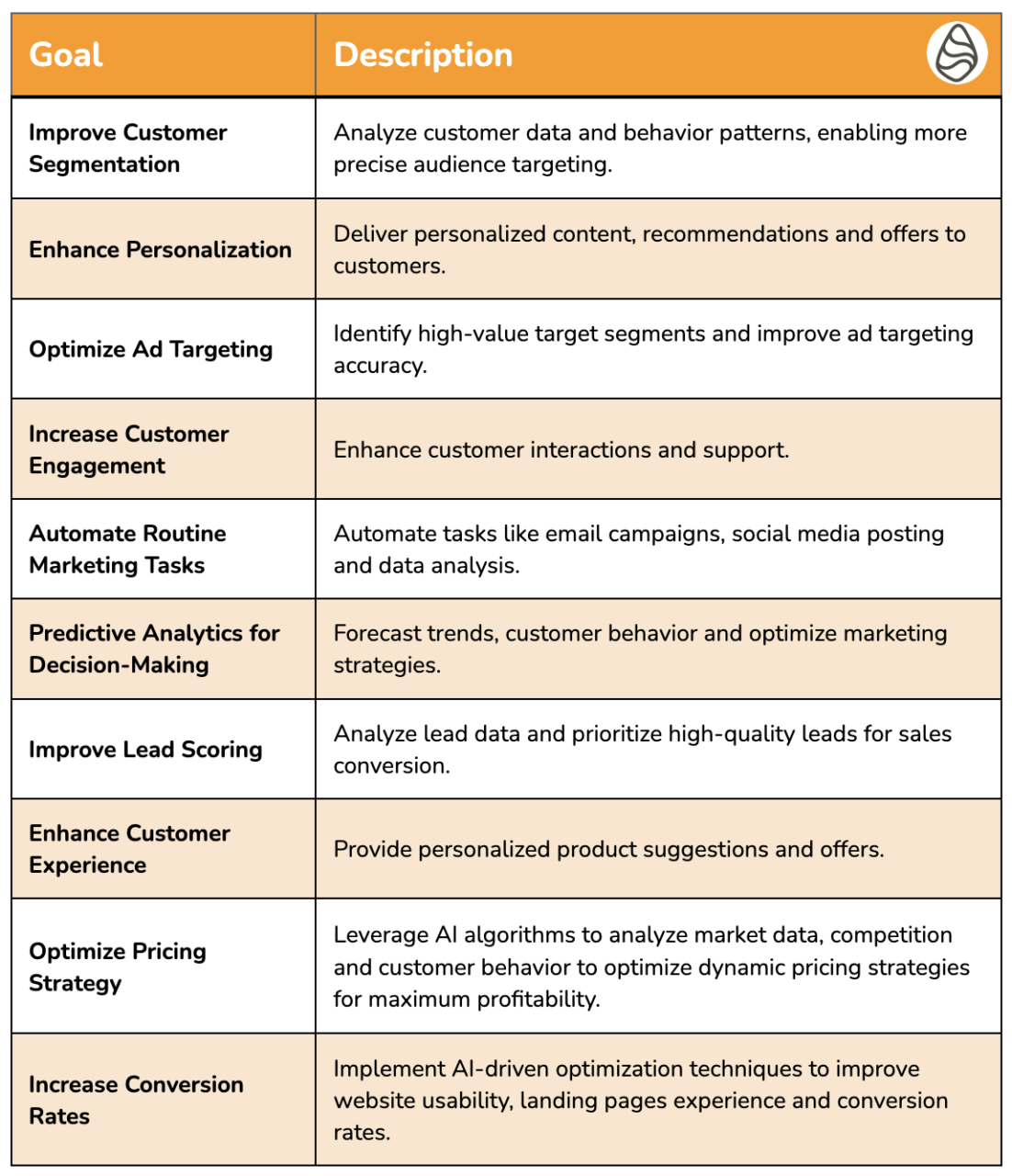
2) Set Data Privacy Standards
The next step is to familiarize yourself with relevant data protection regulations such as the General Data Protection Regulation (GDPR) or the California Consumer Privacy Act (CCPA). Ensure that your AI automation practices adhere to the requirements outlined in these regulations.
Here are the five basic data privacy rules that you should follow:
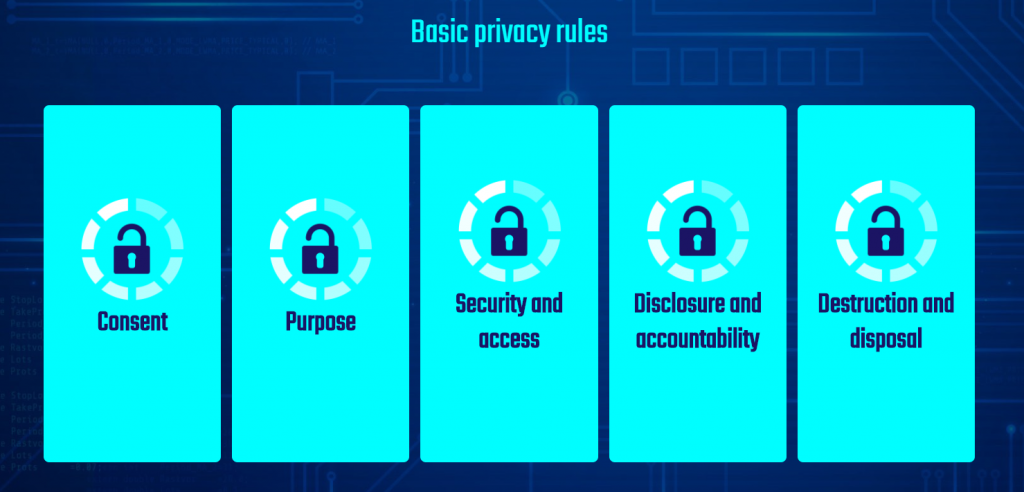
Dive Deeper:
* The Email Marketer’s 4-Step Guide to GDPR Compliance
* Google Privacy Sandbox: What Does It Mean for the Future of Targeted Ads?
3) Choose Your Data Sources
Next, you should carefully select your data sources for effective data collection.
Look for data sources that offer a diverse range of information. Combining different types of data – such as existing customer data, audience demographics, browsing behavior, social media interactions, and transaction history – can provide a comprehensive understanding of customers and enhance the effectiveness of your overall AI marketing strategy.
The choice of data sources depends on the specific goals and requirements of the data collection project, but here are some common data sources:
- Surveys and Questionnaires: They can be conducted through online forms, phone interviews, or in-person interviews.
- Web Scraping: Web scraping involves extracting data from websites. It can be useful for gathering publicly available information, such as customer reviews, product details, or news articles.
- Social Media: Social media platforms generate massive amounts of user-generated content. Analyzing social media data can provide insights into public opinions, trends, and behavior patterns.
- Customer Relationship Management Systems: CRM systems store valuable customer data, including contact information, purchase history, interactions, and preferences.
- Website Analytics: Web analytics tools like Google Analytics provide data on website traffic, visitor behavior, referral sources, conversions, and more. Marketers can use this data to optimize website performance, understand user journeys, and identify areas for improvement.
- Email Marketing Platforms: These provide data on email open rates, click-through rates, conversions, and subscriber behavior.
- Market Research: Market research surveys, focus groups, and interviews can provide insights into consumer preferences, purchasing habits, brand perception, and market trends.
- Sales Data: Sales data includes information on product purchases, sales channels, pricing, and customer segments.
- Third-Party Data Providers: Third-party data providers collect and aggregate data from various sources, such as public records, consumer surveys, and online behaviors. This data can enrich your customer profiles and help you target specific audiences.
Remember, it’s important to consider the quality, reliability and ethical implications of each data source.
4) Select the Right AI Platforms
Determine the functionalities and capabilities you seek, such as natural language processing, image recognition or predictive analytics. Look for platforms that offer user-friendly interfaces, comprehensive documentation and reliable customer support. Additionally, consider factors like cost, licensing terms and the ability to customize and integrate the platform with your existing workflows.
An example of a popular AI platform is Google Cloud AI Platform. It offers a wide range of AI marketing tools and services, including machine learning, natural language processing and computer vision. The platform provides pre-trained models and APIs, allowing developers to leverage AI tech capabilities without extensive coding knowledge.
The Google Cloud Platform offers a range of services to incorporate AI to support the tasks in a typical ML workflow, as shown below:
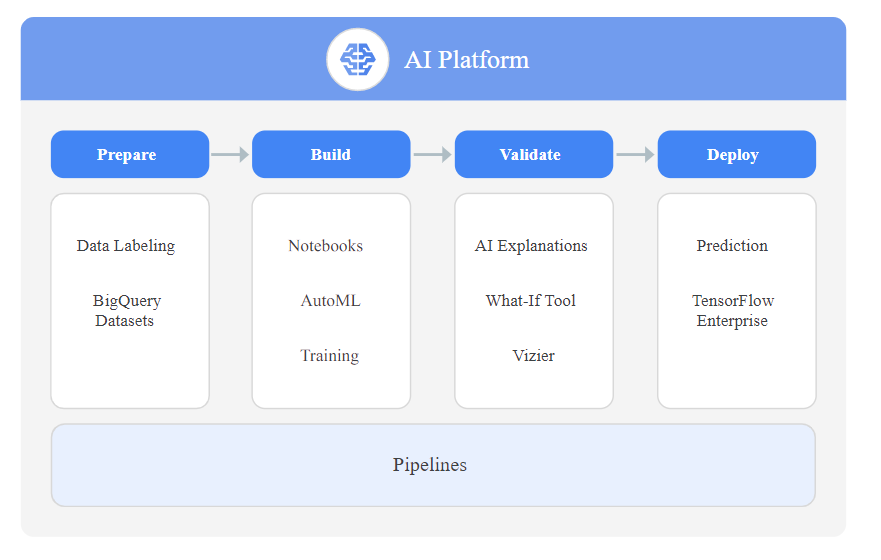
Similarly, you can use other integrated machine learning apps and marketing analytics tools like Scale AI and Dataiku for the development of AI applications.
5) Automate Your Marketing Process
Now use a combination of the best AI marketing tools, depending on your predetermined objectives and current industry trends, to create workflows and triggers for different marketing activities.
Here is an example of a simple marketing automation workflow in action:
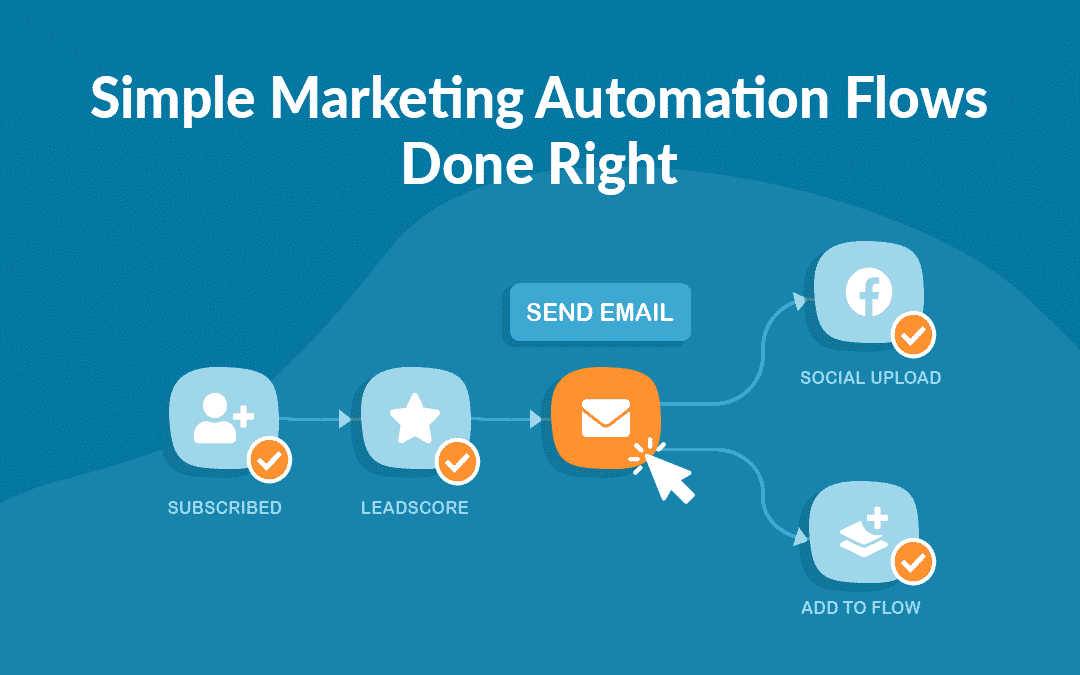
Workflows define the sequence of actions and communications, while triggers initiate these actions based on specific conditions or customer behavior. For example, you can use an AI marketing tool to set a simple task automation to send personalized product recommendations to customers who have added certain products to their cart.
10 Best Examples of How AI Helps in Marketing
Now let’s take a look at some great examples of just how AI can help in your marketing efforts.
Intelligent Content Curation
Intelligent content curation is the art of leveraging AI algorithms to research, curate and deliver personalized content to users based on the latest market trends.
Cognitive computing systems can quickly analyze large chunks of data, which otherwise would have taken a large amount of time by human content evaluators. By analyzing user interactions, browsing history, social media activity and other data points, AI technology can identify content that is most likely to resonate with individual users.
For example, platforms like Spotify and Apple Music use intelligent algorithms to curate personalized playlists for their users:
Here are some data models that Spotify uses:
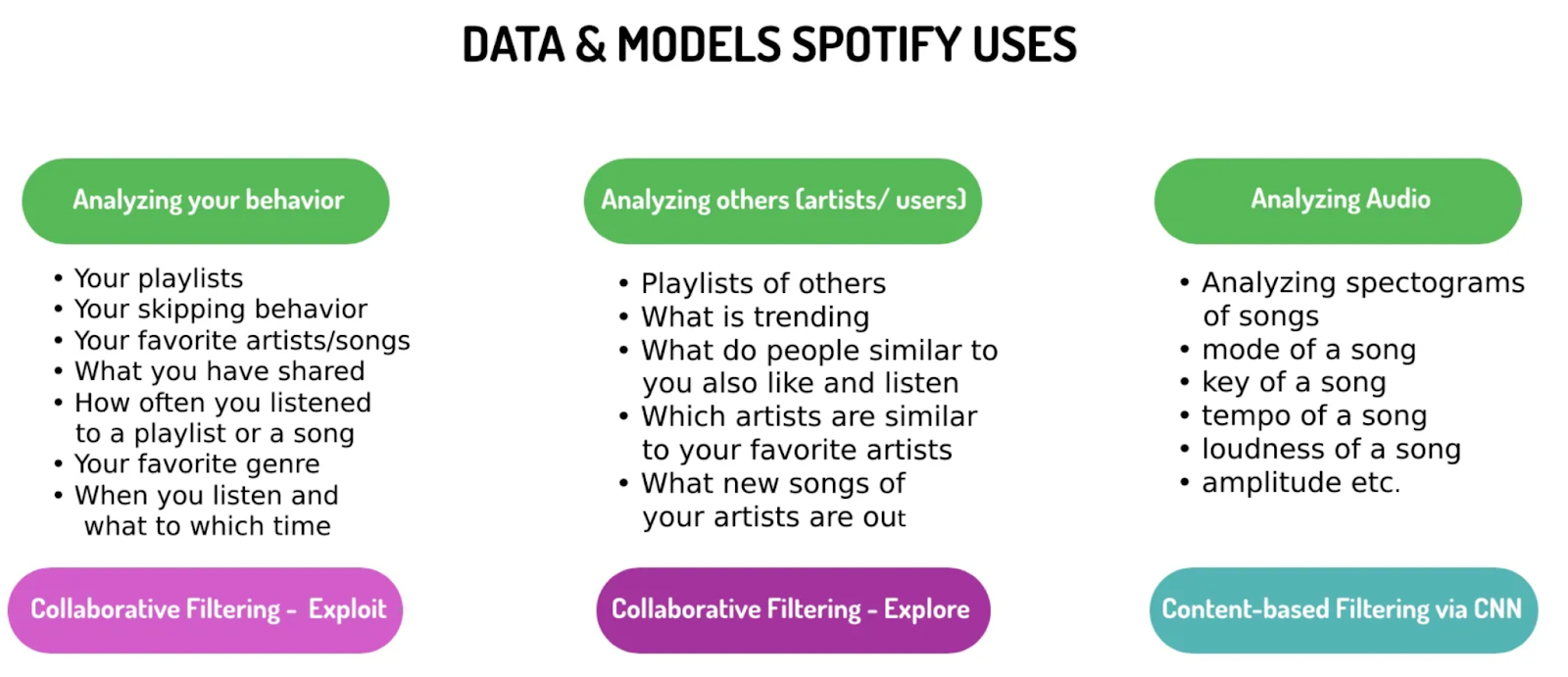
These algorithms analyze a user’s listening history, favorite genres, artists, and even the time of day to create custom playlists that cater to the user’s unique musical taste.
Related Content: Spotify Ads 101: How to Run Successful Audio and Video Ads
Cost-Effective Ad Targeting
Artificial intelligence algorithms play a pivotal role in helping businesses target their ads more efficiently by reducing wasted ad spend and improving the overall marketing campaign performance.
Machine learning helps to analyze a wide range of marketing data, including user demographics, browsing behavior, purchase history and engagement metrics, to create intent-specific ads for users in real time.
The best example of how AI helps reduce ad spending is in the functioning of programmatic advertising:
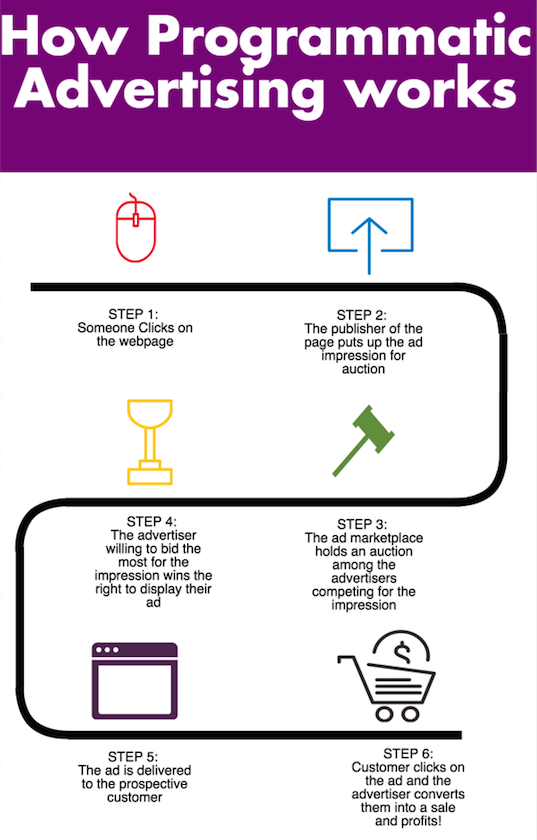
Machine learning assisted PPC ad platforms automatically target ads to the most relevant and high-potential audience segments leveraging intelligent bidding to drastically increase the chances of conversion while reducing the cost per click (CPC) and cost per customer acquisition (CPA).
Related Content: The Ultimate Guide to Programmatic Advertising for Brands in 2023
Automated Buying and Selling of Ad Space
Programmatic advertising utilizes AI marketing platforms and real-time bidding (RTB) to streamline and optimize the transactional aspects of ad space transactions. Automated algorithms help advertisers and sellers in efficient buying and selling of digital ad inventory. They optimize bid prices and target specific audience segments to maximize the impact and effectiveness of digital marketing campaigns.
One example is the use of demand-side platforms (DSPs), which use AI-assisted algorithms to analyze available ad inventory across multiple ad exchanges and websites. This enables advertisers to reach a global or local ad inventory in the shortest possible time.
Here is an example of how programmatic ads work:
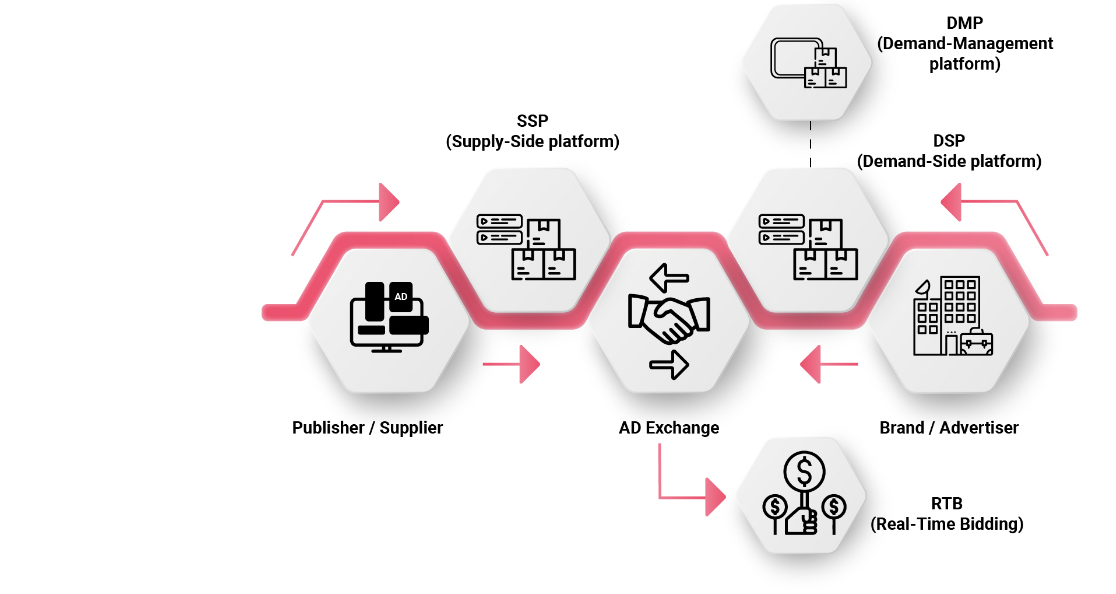
Active Social Media Listening
Social media listening involves monitoring and analyzing your social media posts in real-time to gain insights into customer sentiments, trends and conversations to maximize your social media presence.
AI also assists in social media management by analyzing vast amounts of social media data. It employs natural language processing (NLP) techniques to understand and interpret social media conversations. Moreover, it can detect sentiments, identify key topics and extract valuable insights from a wide range of user-generated content, including posts, comments and reviews.
With AI-assisted social media listening, you can identify your customer sentiments, whether it is positive, negative or neutral. By understanding customer sentiment, you can quickly respond to issues, engage with customers and take proactive measures to improve customer satisfaction.
Here is an example of a dashboard from the Social Searcher sentiment analysis tool that displays the ratio of positive to negative brand sentiments across different social media platforms:
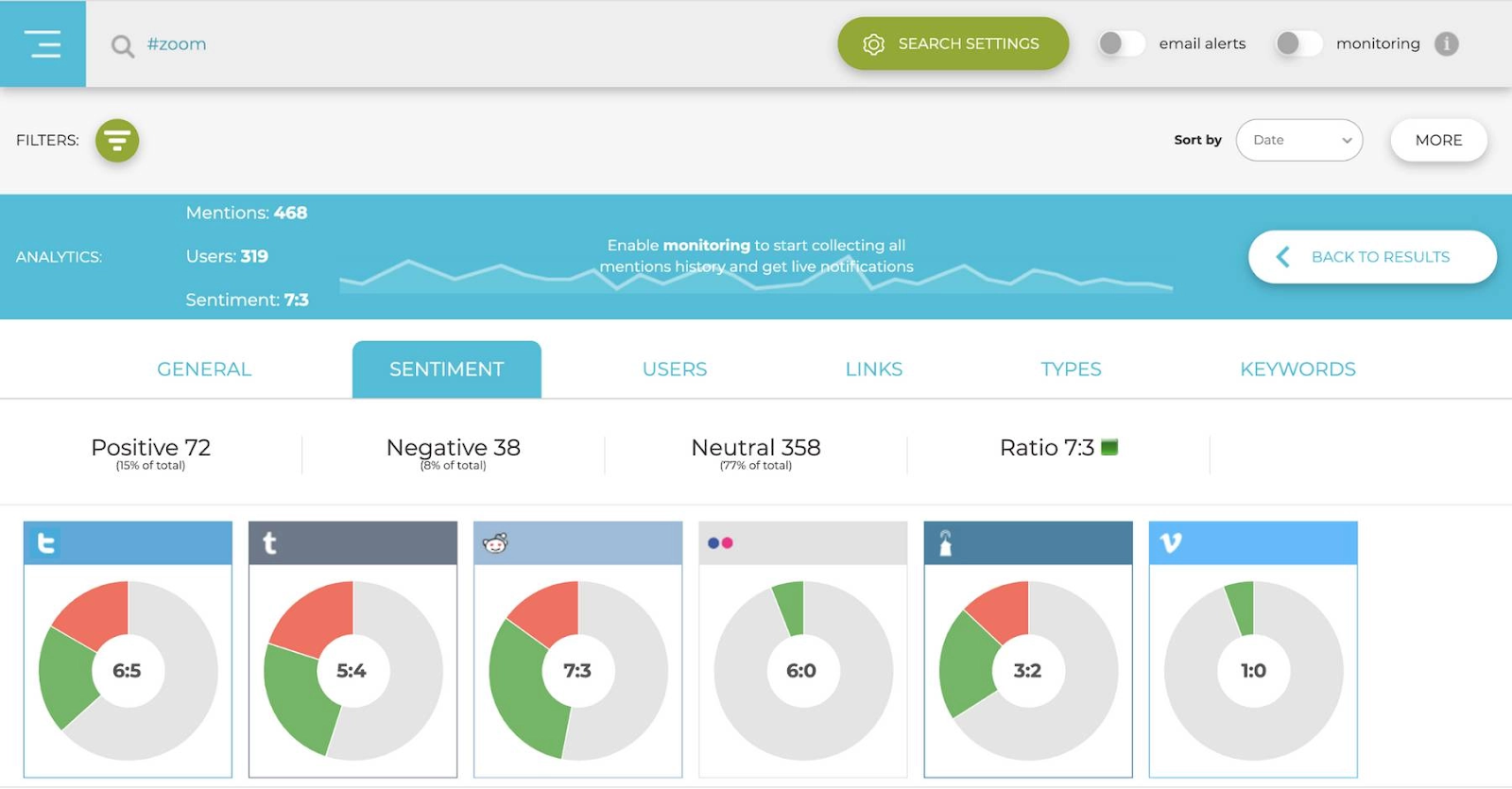
Related Content: 7 Ways to Leverage AI in Social Media Marketing
Automated Lead Scoring
Automatic lead scoring is a process that incorporates AI and machine learning algorithms to automatically evaluate and prioritize leads based on their likelihood to convert into customers. It helps companies identify the best leads and focus their efforts on high-value prospects.
AI algorithms can learn from historical data and identify patterns and indicators that correlate with lead quality and conversion probability. This enables businesses to assign a score or rank to each lead, indicating its potential value.
One unique example of how AI enables automated lead scoring is through predictive modeling. By leveraging machine learning algorithms, AI can identify patterns and attributes that are indicative of a lead’s likelihood to convert. You can use this data to prioritize your digital marketing efforts on leads with the highest probability of conversion and add your own lead scores into your marketing software to understand their effectiveness.
Here is an example of a lead scoring system on Active Campaign:
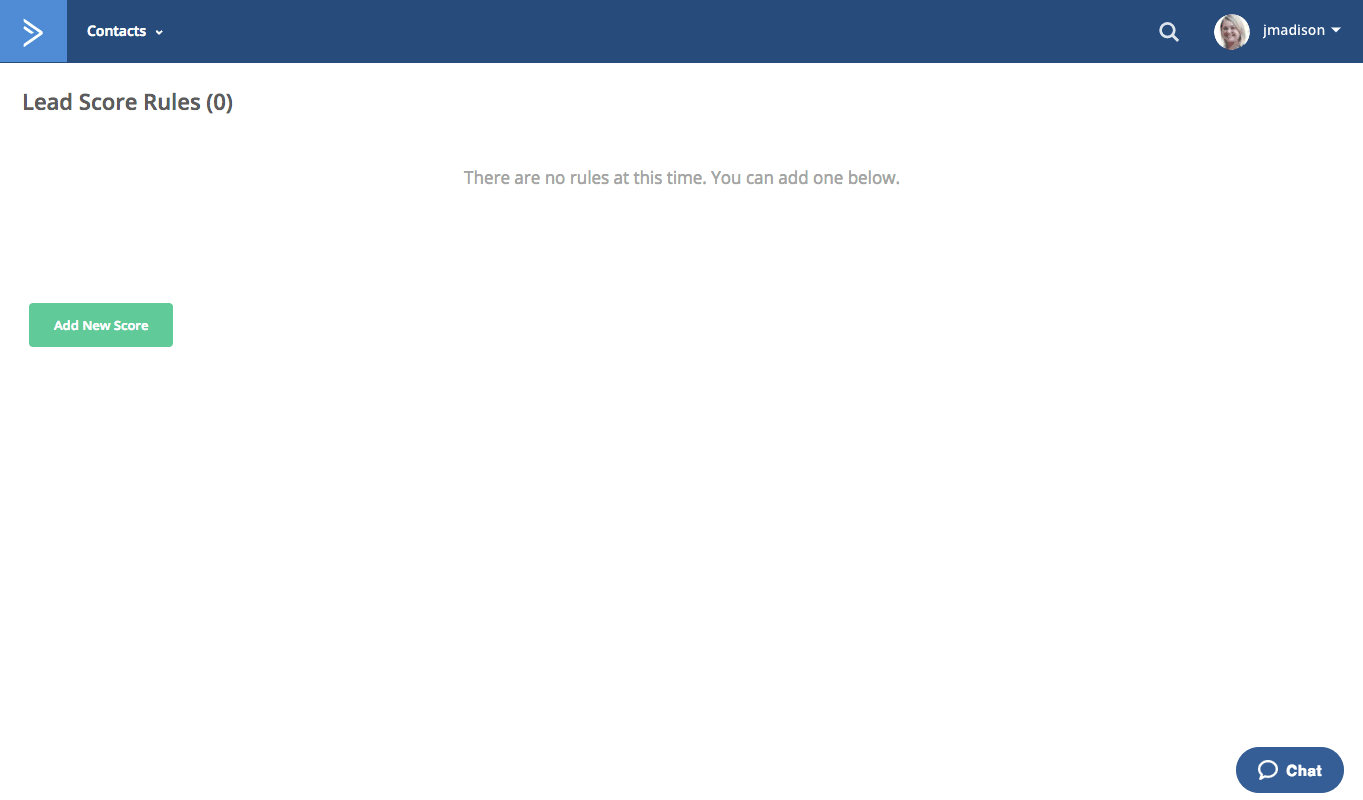
Smart Content Optimization
Smart content optimization refers to the use of AI content tools to enhance the quality, relevance and performance of content. It involves using AI-powered tools and techniques to generate creative ideas based on keyword data and make data-driven optimizations to improve the impact and effectiveness of content.
AI helps in smart content optimization by employing natural language processing and machine learning algorithms to analyze content at a granular level. It can assess factors such as readability, SEO optimization, keyword usage, tone, and engagement metrics to provide recommendations for improvement. AI algorithms can also analyze user behavior, preferences and feedback to personalize and tailor content for faster content generation for specific audiences.
The best example of how AI assists in smart content optimization is automated A/B testing.
AI algorithms can automatically generate and test different variations of content elements, such as headlines, images or call-to-action buttons. By analyzing user engagement metrics, conversion rates and other performance indicators, AI can identify the most effective content elements and make data-driven recommendations for optimization.
Here is an example of AI-assisted AB testing from Toyota, where they tested two variations of content copy. The blue one generated 18% more conversions compared to the red one:

Related Content: 7+ Content Optimization Strategies to Increase Your Rankings
Quick Data Analysis
Quick data analysis involves rapid processing and extraction of valuable insights from large volumes of data. Businesses should embrace AI for quick data analysis by automating and accelerating various stages of the data analysis process. Through advanced statistical methods, it can handle vast datasets, identify patterns, detect anomalies and generate insights in real time or near real time.
One unique example of how AI facilitates quick data analysis is through automated data preprocessing.
AI algorithms can automatically clean and transform raw data, handle missing values, and normalize data formats. It can uncover hidden insights, make predictions, and generate actionable recommendations to help you make timely decisions and take proactive actions.
Advanced Marketing Automation
Advanced marketing automation is the use of AI and advanced technologies to streamline and optimize marketing processes, campaigns, and customer interactions. AI algorithms can segment audiences, create dynamic content, automate customer journeys, and deliver personalized messages across multiple channels in real-time.
Some of the top ai marketing tools are:
Dynamic Email Marketing
Dynamic email marketing is the practice of creating and sending automatic emails to individual recipients based on their unique characteristics, preferences, and behaviors.
It involves leveraging AI and data-driven techniques to customize the content and layout of emails in real-time, ensuring maximum engagement and conversion. AI software can segment the audience, generate dynamic content, and personalize email elements such as subject lines, images, offers and recommendations.
Here is an example of a dynamic content email from Fit for Me. Instead of creating separate ad campaigns for each age group of their audience, they dynamically switched out the image while everything else remained the same:

Effective Website Personalization
Website personalization involves tailoring a website’s content, layout and user experience to meet the individual needs and behaviors of each visitor. AI marketing programs can segment visitors into different groups or personas and dynamically adapt the website’s content and design elements to suit each segment’s unique characteristics.
One unique example of how AI enhances effective website personalization is through real-time recommendations to attract customers. AI can generate personalized recommendations for products or content, which helps you increase cross-selling, upselling and overall engagement on your website.
Product recommendations from Amazon are a great example of website personalization powered by artificial intelligence to engage customers:
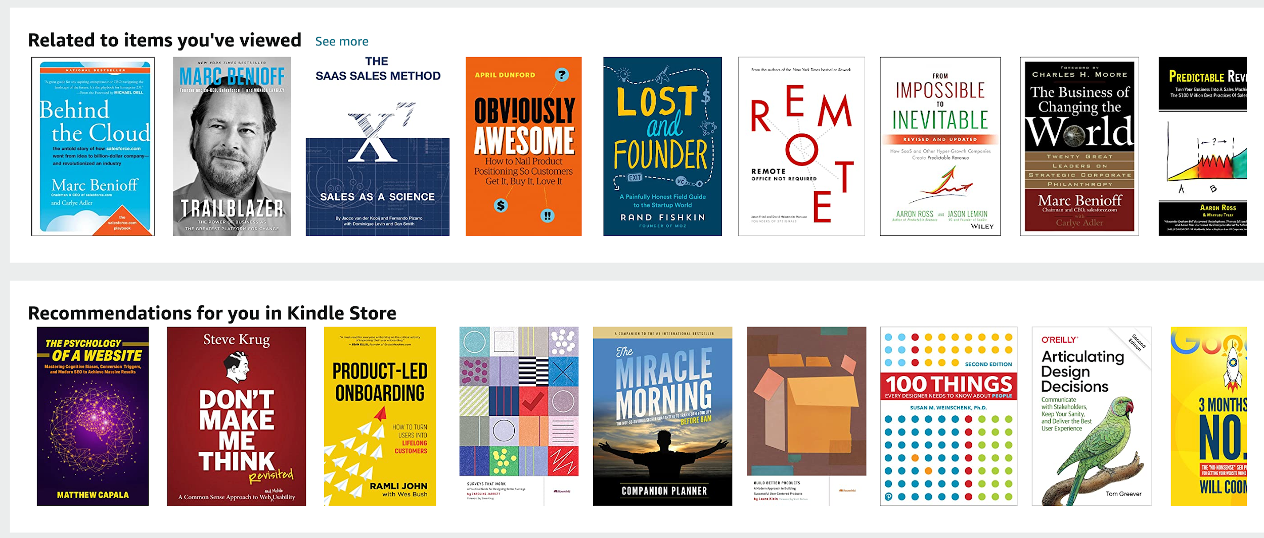
Related Content: What Amazon’s Marketing Strategy Can Teach SMB Owners
Last Word on AI for Marketing
AI has emerged as a game-changer in the field of advertising, providing marketers with powerful AI tools and capabilities to enhance their marketing campaigns and achieve better results. Leverage the best examples and use cases of AI-assisted marketing explained in this article to implement AI in your advertising strategy and outsmart your competitors.
If you are still unsure how you can use AI-powered marketing to upscale your revenue, it’s probably wise to work with a marketing agency to better reach your target audience.
If you’re ready to level up your business with AI marketing, Single Grain can help! 👇



